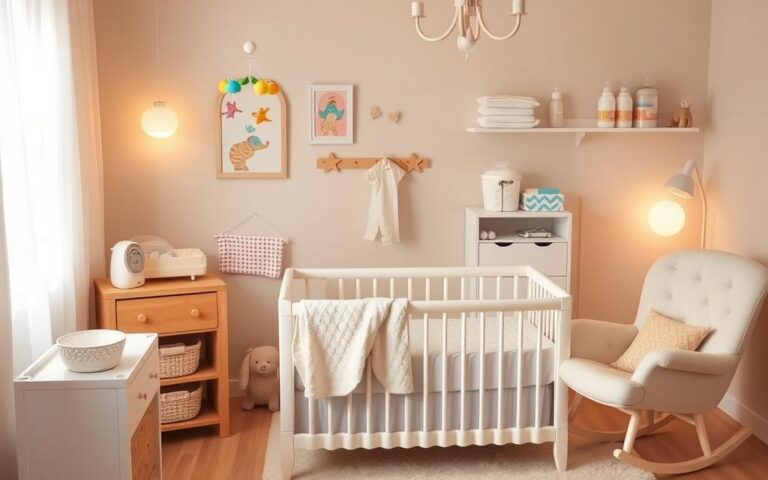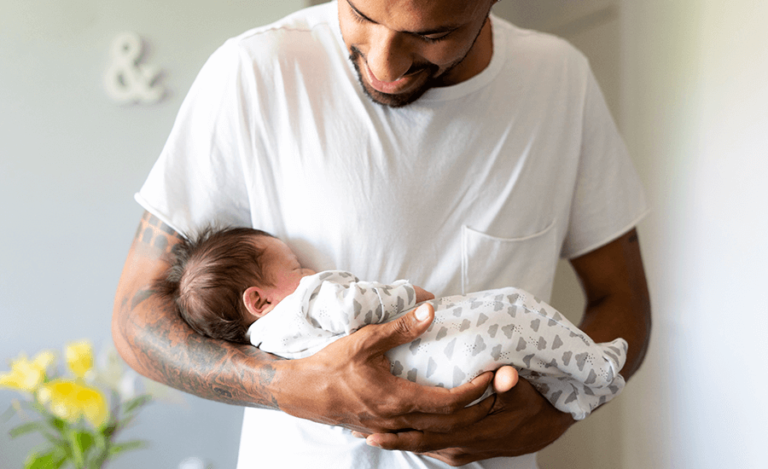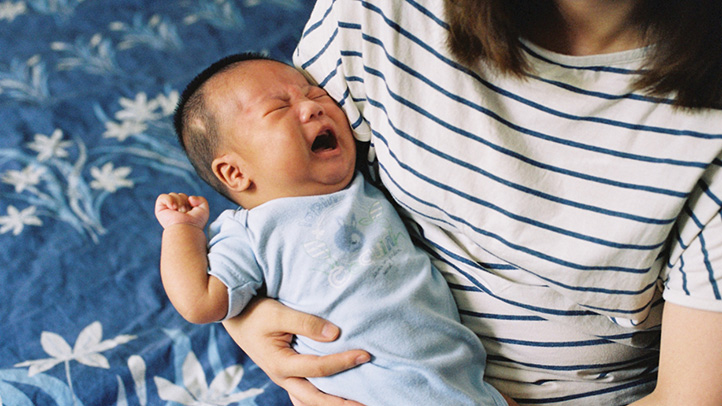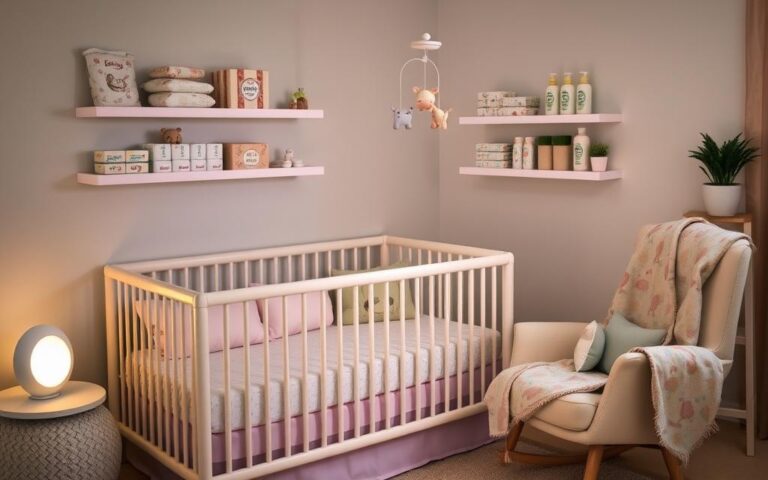How to Baby-Proof Your Home: A Complete Guide
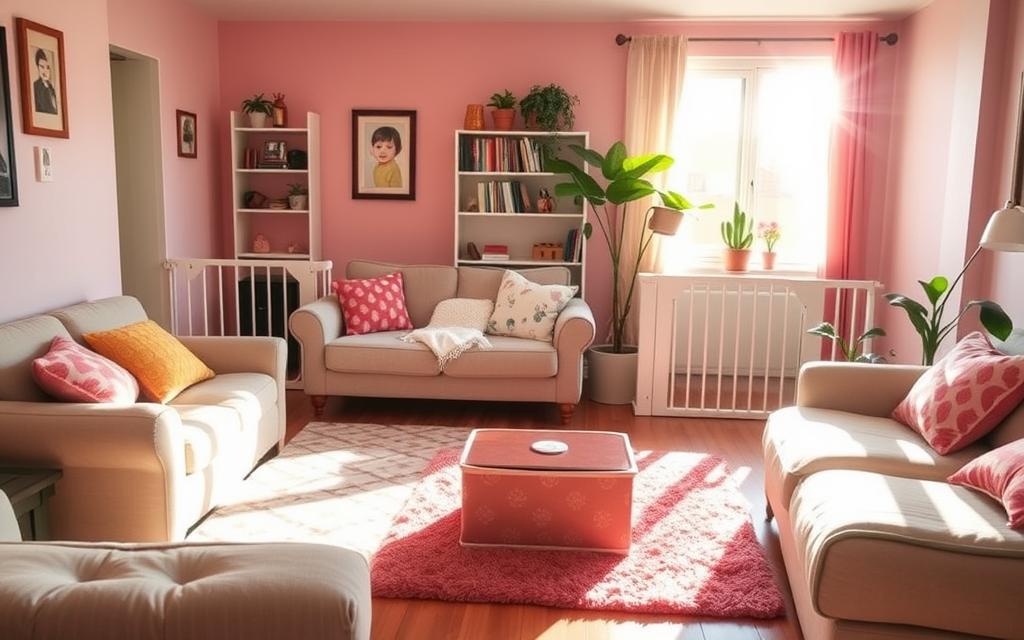
As a parent, making your home safe for your little one is key. Baby-proofing is vital to prevent accidents and ensure a secure space for your child. With the right safety products and measures, you can lower injury risks. Home accidents are a major cause of injury and death in kids, making baby-proofing a must.
By baby-proofing, you create a safe and caring environment for your child to grow. You can secure cabinets, protect against electrical dangers, and make outdoor spaces safe. This guide will show you why baby-proofing is important and how to start.
Key Takeaways
- Baby-proofing your home is essential for preventing accidents and creating a safe environment for your child.
- Child safety measures, such as securing cabinets and protecting against electrical hazards, are critical for preventing injuries.
- Baby safety products, such as outlet covers and cabinet locks, can help create a secure environment for your child.
- Creating a safe outdoor space is an important part of baby-proofing your home.
- By taking the time to baby-proof your home, you can significantly reduce the risk of injuries and accidents.
- Baby-proofing your home is an ongoing process that requires regular checks and updates to ensure your child’s safety.
Understanding the Importance of Baby-Proofing Your Home
As a parent, keeping your child safe is your main goal. Baby-proofing your home is key to making a safe space for your child to grow and explore. By using baby-proofing tips and childproofing techniques, you can lower the chance of accidents and injuries.
Pediatricians and child safety experts say to start baby-proofing early. This way, you can find and fix dangers like sharp edges, electrical outlets, and harmful substances. Using baby safety gear, like gates and locks, adds extra protection.
Why Baby-Proofing is Essential
Baby-proofing is more than just avoiding accidents. It’s also about making your child feel safe and secure. A safe home helps your child feel confident and independent. Here are some reasons to focus on baby-proofing:
- Lowering the risk of injuries and accidents
- Keeping your child away from harmful materials and substances
- Helping your child feel secure and comfortable
When to Start Baby-Proofing
It’s never too early to start baby-proofing. Experts suggest starting before your baby is born. This lets you get your home ready and spot dangers before your child can move around. Important milestones to remember include:
As you start baby-proofing, always be alert and adjust as your child grows. With the right baby-proofing tips and childproofing techniques, you can make a safe and loving space for your child to grow.
Essential Tools and Materials for Baby-Proofing
Keeping your home safe for kids is key. Baby-proofing is a must to ensure a safe space for your little ones. With the right baby safety products, you can stop accidents and make a secure area for play and learning.
Some important tools and materials for baby-proofing are:
- Safety gates to block off stairs and rooms
- Cabinet locks to secure cabinets and drawers
- Electrical outlet covers to prevent electrical shock
- Corner protectors to cushion sharp edges
- Window guards to prevent falls
When picking toddler-proofing products, think about durability, ease of use, and how well they work. Choose products made for baby-proofing and loved by other parents. The right tools and materials help make a safe and secure home for your kids.
Baby-proofing is a continuous task that needs regular checks and updates. Stay alert and use the right tools to keep your home safe for your children. This way, you create a safe place for them to grow and explore.
Kitchen Safety Measures
Keeping your kitchen safe is key when you have a child. Baby-proofing is essential to avoid accidents. Experts say securing dangerous items is a must.
First, make sure cabinets and drawers are locked. This stops your child from getting to sharp objects and harmful substances. Also, appliances can be dangerous, with hot surfaces and sharp edges.
- Installing safety latches on cabinets and drawers
- Using appliance locks to prevent children from accessing hot surfaces and sharp edges
- Keeping cleaning supplies and toxic substances out of reach
- Supervising your child at all times when they are in the kitchen
By following these steps, you can make your kitchen safer for your child. Remember, kitchen safety is always important. You need to keep an eye on your child and update safety measures as they grow.
| Safety Measure | Description |
|---|---|
| Securing Cabinets and Drawers | Installing safety latches and locks to prevent access to hazardous materials |
| Appliance Safety | Using appliance locks and supervising children when using appliances |
| Food Preparation Areas | Keeping cleaning supplies and toxic substances out of reach and supervising children during food preparation |
Creating a Safe Living Room Environment
When it comes to living room safety, there are several factors to consider. A child-friendly home is not just about removing hazards. It’s also about creating a space that promotes learning and exploration. One key aspect of living room safety is baby-proofing furniture. This means securing heavy furniture and televisions to the wall to prevent them from tipping over.
To create a safe and child-friendly home, consider the layout of your living room. Here are some tips to get you started:
- Secure any loose rugs or mats to prevent slipping
- Use outlet covers to protect against electrical shocks
- Choose baby-friendly materials for upholstery and rugs
A safe living room environment is not just about protecting your child from harm. It’s also about creating a space that promotes relaxation and enjoyment. By following these tips and considering living room safety and baby-proofing furniture, you can create a child-friendly home that your whole family can enjoy.
Remember, a safe and child-friendly home is just a few steps away. By prioritizing living room safety and baby-proofing furniture, you can create a space that is both functional and enjoyable for the whole family.
| Safety Measure | Description |
|---|---|
| Securing Furniture | Securing heavy furniture and televisions to the wall to prevent tipping |
| Outlet Covers | Using outlet covers to protect against electrical shocks |
| Baby-Friendly Materials | Choosing baby-friendly materials for upholstery and rugs |
Bathroom Safety Essentials
When it comes to bathroom safety, there are several key considerations to keep in mind. One of the most critical aspects is water safety, as drowning can occur in just a few inches of water. To mitigate this risk, it’s essential to never leave a baby unattended in the bath and to ensure the water is not too hot.
Some important bathroom safety tips include:
- Installing a thermostat to regulate water temperature
- Using a bath seat or support to prevent slipping
- Keeping the bathroom floor clean and dry to prevent falls
In addition to water safety measures, it’s also critical to secure medicine cabinets and protect against electrical appliances in the bathroom. This can be achieved by installing safety latches on cabinets and keeping electrical appliances out of reach.
By following these baby-proofing the bathroom tips, you can help create a safe and secure environment for your little one. Remember, bathroom safety is an ongoing process that requires constant vigilance and attention to detail.
| Safety Measure | Description |
|---|---|
| Thermostat Installation | Regulates water temperature to prevent scalding |
| Bath Seat or Support | Prevents slipping and falling in the bath |
| Safety Latches | Secures medicine cabinets and electrical appliances |
Securing the Nursery and Bedroom
When it comes to nursery safety and bedroom safety, there are several key factors to consider. One of the most critical aspects is crib safety. A safe crib is essential for a baby’s well-being. To ensure crib safety, choose a crib that meets current safety standards. Also, use a firm, snug-fitting mattress.
Here are some tips for securing the nursery and bedroom:
- Keep soft objects and loose bedding out of the crib to prevent suffocation and entrapment risks.
- Ensure the crib is placed away from windows, curtains, and blinds to reduce the risk of choking hazards and entanglement.
- Use a crib with a sturdy frame and a secure mattress to prevent collapse and suffocation.
By following these tips and prioritizing nursery safety and bedroom safety, you can help create a safe and secure environment for your baby. Remember, crib safety is just one aspect of overall bedroom safety. So, be sure to assess the entire room for any other hazards.
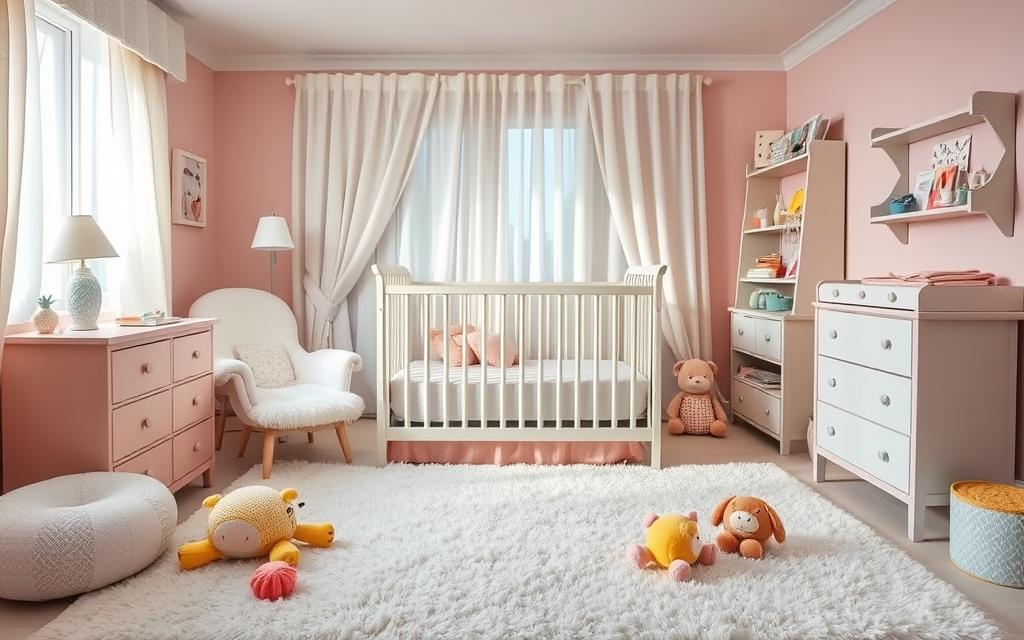
Stairway and Hallway Protection
Keeping your little ones safe from hazards is key. Installing baby gates at the top and bottom of stairs is a smart move. Look for gates that fit your stairway well and are made of strong materials like metal or wood.
Here are some tips for installing gates:
- Measure the width of the stairway to ensure a proper fit
- Choose a gate with a secure locking mechanism
- Install the gate at the top and bottom of the stairway
Don’t forget about banister and railing safety. Loose railings can be dangerous. Use railing guards or banister caps to keep your child safe.
By following these steps, you can make a safe space for your child. Always keep stairway and hallway safety in mind to prevent accidents and keep your child safe.
| Safety Measure | Description |
|---|---|
| Gate Installation | Install baby gates at the top and bottom of stairways |
| Banister and Railing Safety | Secure loose railings and use railing guards or banister caps |
Electrical Safety Throughout Your Home
Keeping your home safe from electrical hazards is key when baby-proofing. Babies are curious and can easily get into trouble with outlets and cords. To keep them safe, use outlet covers and manage cords well.
Outlet Covers and Cord Management
Outlet covers are a simple way to stop babies from sticking things into outlets. Also, keep cords away and tied down to avoid tripping. Here are some cord management tips:
- Keep cords short and tidy to prevent tripping hazards
- Secure cords to walls or furniture to prevent them from being pulled out
- Use cord protectors to prevent damage to cords and reduce the risk of electrical shock
By using these tips and outlet covers, you can greatly lower the risk of electrical accidents. Remember, keeping your home safe is an ongoing task. You need to always check and update safety measures to keep your baby safe.
Appliance Safety Measures
Appliance safety is also very important. Here are some ways to make sure your appliances are safe and secure:
- Use appliance locks to prevent babies from accessing appliances
- Keep appliances out of reach to prevent them from being pulled down
- Regularly inspect appliances for damage or wear and tear
| Appliance | Safety Measure |
|---|---|
| Refrigerator | Use a refrigerator lock to prevent access |
| Oven | Keep the oven out of reach and use a lock |
| Dishwasher | Keep the dishwasher out of reach and use a lock |
Window and Door Safety Solutions
Keeping your little ones safe from harm is key. One great way to do this is by baby-proofing windows and using door stops and holders. These steps help stop falls, finger pinches, and doors from slamming shut. They make a safer space for your child to play and learn.
Here are some important tips for window safety:
- Always lock windows to stop kids from getting out or strangers from getting in
- Put up window guards or stops to control how far windows can open
- Move furniture away from windows to stop kids from climbing up
For door safety, remember to:
- Use door stops and holders to avoid finger pinches and slamming doors
- Lock doors, like those to the garage or pool, to keep your child safe
- Watch your child when they’re near doors and windows
By using these baby-proofing windows and door safety tips, you can lower accident risks. Always be alert and update your safety steps as your child grows and gets more curious.
| Safety Measure | Benefits |
|---|---|
| Window guards | Prevents falls and escape |
| Door stops | Prevents finger pinching and door slamming |
| Locked doors and windows | Prevents unauthorized entry and exit |
Outdoor Area and Garage Safety Tips
Outdoor safety is key to keeping your kids safe. It’s important to prevent accidents and injuries. Pool safety is a big part of this, as drowning is a major risk.
Installing a fence and using pool alarms can help. These steps can save lives.
Garage safety is also critical. It can be dangerous for babies, with risks of poisoning and physical harm. To stay safe, keep toxic substances and sharp objects away from your child.
Also, make sure heavy equipment and tools are locked up. Garden safety is important too. Keep gardening tools and chemicals safe and out of reach.
Pool and Water Feature Protection
- Install a fence around the pool to prevent unauthorized access
- Use pool alarms to detect any possible accidents
- Always watch your child when they’re near the pool
Garden Safety Measures
Garden safety is vital to avoid accidents. Store gardening tools and chemicals safely, where your child can’t get to them. Check your garden often for hazards like sharp objects or toxic plants.
Garage Hazard Prevention
Garage safety is essential to avoid accidents and injuries. Keep toxic substances and sharp objects in a safe place, out of your child’s reach. Check your garage for hazards like heavy equipment or tools.
By following these tips, you can make a safer environment for your kids. This helps prevent accidents and keeps them safe.
Maintaining Your Baby-Proofing System
Keeping your baby-proofing system up to date is key for child safety. As your baby gets more active, it’s important to check and update your baby-proofing system often. This helps avoid accidents and keeps your little one safe.
Here are some tips for maintaining baby-proofing:
- Regularly inspect your home for new hazards and update safety measures as necessary
- Check for worn-out or damaged safety equipment and replace it immediately
- Stay up-to-date with the latest child safety guidelines and recommendations
A well-maintained baby-proofing system gives parents and caregivers peace of mind. They know their little ones are safe and protected. By following these tips and staying committed to maintaining baby-proofing, you can create a safe and nurturing environment for your child to grow and thrive.
| Tips for Maintaining Baby-Proofing | Frequency |
|---|---|
| Inspect home for new hazards | Monthly |
| Check safety equipment | Quarterly |
| Update safety measures | As necessary |
Conclusion: Creating a Safe Haven for Your Little One
As we wrap up this guide on baby-proofing your home, remember that keeping your child safe is a constant task. The steps we’ve covered are a great start. But, it’s important to always watch out for new dangers and keep your home safe for your child.
Choosing the right baby safety products and checking for hazards often can help prevent accidents. This way, you can feel more secure. Always be ready to take action and ask for help from experts or other parents to make your home even safer.
A safe home is the foundation for your child’s growth and a loving environment. By focusing on baby-proofing, you’re not just keeping your child safe. You’re also setting the stage for many happy moments and important milestones in their life.



